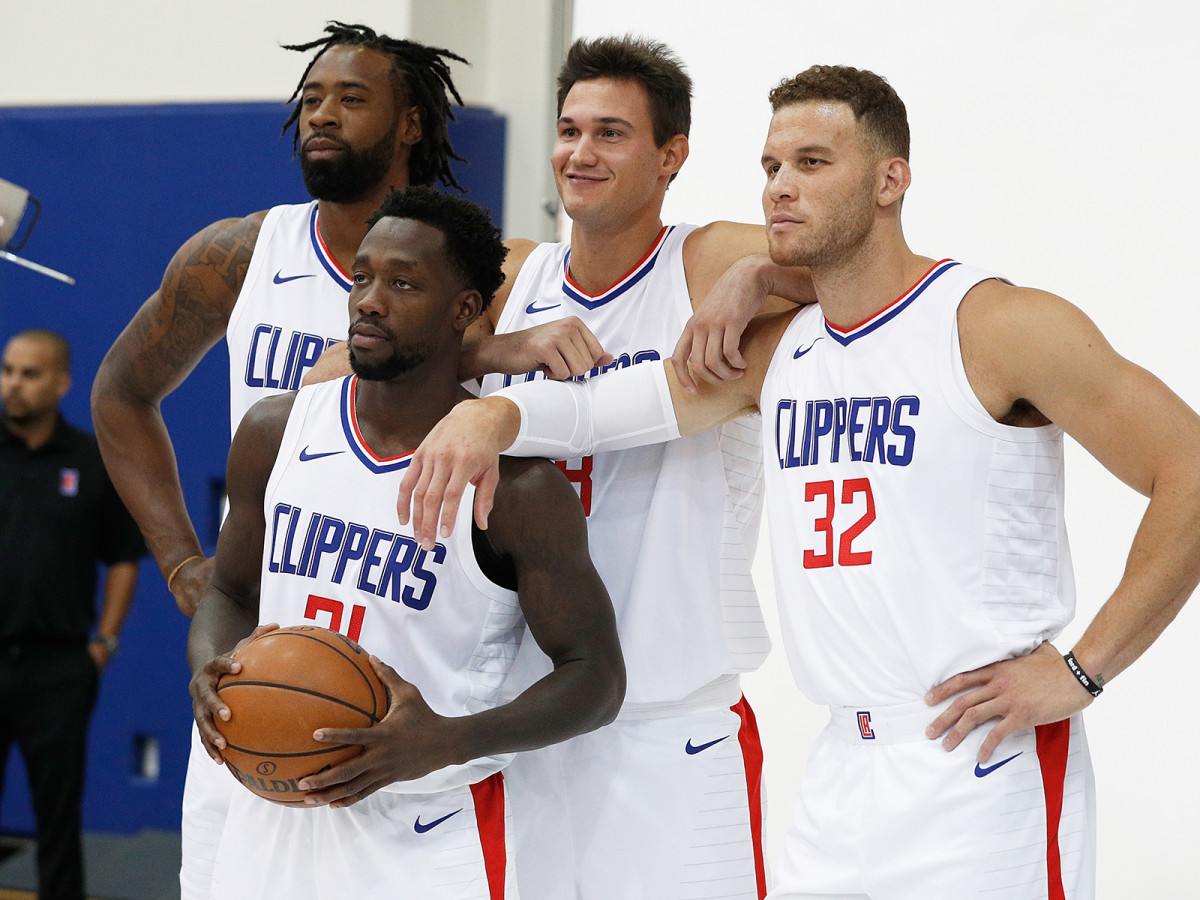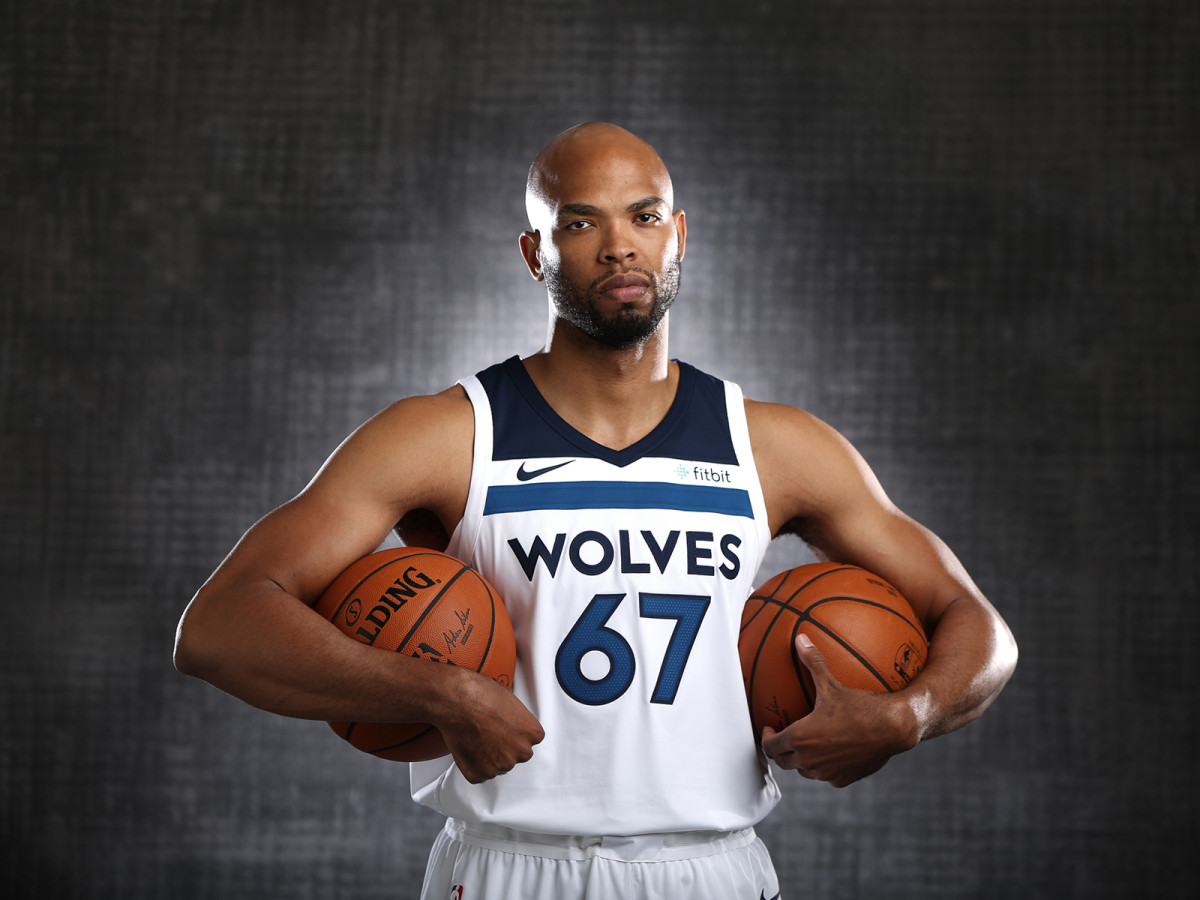Same Player, New Place: How Will the NBA's Most Impactful Role Players Fare?

While last year’s Western Conference playoffs were defined by outsized performances from superstars Kawhi Leonard, James Harden and Russell Westbrook, many of the series were ultimately decided by the efforts of teams’ role players. Joe Johnson morphed into Iso-Joe and became a lethal crunch-time scorer for the Jazz, while Lou Williams and Eric Gordon feasted on hapless Thunder lineups when Westbrook headed to the bench.
Many of the league’s most notable role players changed teams this offseason, adding intrigue to a summer full of All-Stars relocating. The Rockets’ point guard pairing of Patrick Beverley and Lou Williams was shipped to Los Angeles, while wings Rudy Gay and P.J. Tucker will look for revamped roles in San Antonio and Houston, respectively. So how will four of the NBA’s most impactful role players fare in their new cities? Here’s our projections.

Patrick Beverley, Clippers
James Harden is obviously the Rockets’ most indispensable player, but the heart of the team over the past four seasons may very well have been Patrick Beverley. The former second round pick brought a defensive intensity unseen through the rest of Houston’s roster, hounding opposing team’s best backcourt player. Not only did Harden benefit from Beverley’s presence on the defensive end, but Williams and Gordon did as well.
Beverley’s value extended past his defensive prowess since the 2015-16 season. Early in his career, Beverley was left open as much as possible, ignored by opposing defenses who dared him to shoot uncontested jumpers. Much of Beverley’s game fit the mold of Tony Allen and Andre Roberson, three-and-D players who don’t bring much three to the table.
Carmelo Anthony, Paul George and the Remaking of Oklahoma City
Since 2015, Beverley’s game has evolved. He’s feasted on corner threes, canning 42% from the corner in 2015-16. Playing with Harden certainly increased his number of open looks, but Beverley also morphed into a fairly-complete offensive player, with increased effectiveness in the pick-and-roll. Come playoff time in 2017 it was impossible to ignore the Beverley on the offensive end of the floor.
Beverley will need to continue his offensive evolution to succeed after being traded to Los Angeles. Nobody can replace Chris Paul in the Clips’ offense, but Beverley’s improvement in the pick-and-roll will be vital to sustaining L.A.’s offensive success over the past six seasons. If Beverley can’t shoulder significant ball-handling duties, DeAndre Jordan will see his lob attempts plummet and Danilo Gallinari’s open threes will be few and far between. Los Angeles doesn’t enjoy enough spacing to survive Beverley as a subpar offensive force.
An interesting experiment could arise if the Clips opt to shift point guard responsibilities to Blake Griffin. The five-time All-Star excelled in the role when CP3 missed time last year, charging end-to-end for transition buckets galore. Griffin’s an adept passer for his size, with excellent court vision both on the break and in the half-court. His offensive dynamism may spring more open shots than what L.A. could produce with Beverley at the helm. If the Clippers fully embrace point-Blake, Beverley would be free to slide into the role he enjoyed in Houston, a three-and-D maestro who brings intensity to every possession. But until that becomes the case, Beverley must evolve into a traditional point guard, a proposition more difficult than many realize.
Rudy Gay, Spurs
At first glance, Gay doesn’t project to be a typical Spur. He’s a high-volume scorer who feasts on isolation buckets, filling his stat sheet most nights on solely points and field goal attempts—not exactly a shining example of efficiency.
Few expected the 13-year veteran to land in San Antonio this offseason. However, after the Spurs opted not to chase some of free agency’s most notable names, Gay arrived as a cheap flyer who could bolster San Antonio’s scoring on the wing. Even coming off of an Achilles tear suffered in January, why not take a shot on a career 18 points per game player at just $13 million over two years?
What Happened to Superman? How Dwight Howard Lost His Way and Is Trying to Get It Back
Gay won’t see many buckets behind the arc with San Antonio. Gregg Popovich and Co. won’t tolerate significant triple attempts from a career 34.5% three-point shooter. But he’ll still find a role in the Spurs’ offense. The UCONN product is a mid-range maven, great at one-dribble pull-ups off of either hand. He’s crafty near the foul line and at both elbows, too. Gay is at his best from 10-16 feet from the tin, where he’s a career 44% shooter.
This skillset would be nearly useless in certain situations. Imagine the horror on Daryl Morey’s face if he had to sit through a season of Gay’s 15 foot pull-ups. But in San Antonio, Gay’s game makes sense. Popovich still utilizes the middle of the floor to a high degree, just look at the shot charts of Kawhi Leonard and LaMarcus Aldridge. And while Gay’s tendency to over dribble will need to quickly be scrubbed under Pop, a platter of pull-ups off screens should be readily available. There’s no telling how much Gay’s ACL injury will hinder his effectiveness, but if healthy, he could morph into a second go-to scorer on the wing alongside Leonard.

Taj Gibson, Timberwolves
There may not be a more fitting player-coach combo in the NBA than Taj Gibson and Tom Thibodeau. Gibson defined Chicago’s physical, defensive-minded style during the Thibodeau era, providing the team’s backbone along with Joakim Noah. In the pair’s five seasons together, Chicago held a winning percentage of .647, winning 50 or more games three times.
This iteration of the Thibs-Gibson pairing is the most talented yet. Minnesota now has three legitimate scoring options after adding Jimmy Butler via trade, including one of the league’s most talented low-post threats in Karl-Anthony Towns. The Timberwolves should have no problem finishing the season top 10 in scoring.
Gibson’s central role in Minnesota will be to revamp the team’s defensive culture. The Timberwolves ranked No. 27 in the league in opponent points per game last year, driving Thibodeau’s voice hoarse on a nightly basis. Andrew Wiggins was too often a turnstile, and Towns’s rotations were sloppy. And after Zach LaVine went down midseason, there wasn’t enough athleticism on the floor each night.
A lack of focus and defensive effort won’t fly with Gibson. He’s one of the more respected veterans in the league, and his presence will be instrumental in Towns’s development. The Timberwolves will have enough firepower to win plenty of games next year. But if they want to contend for the Western crown, they’ll have follow Gibson’s lead on the defensive end.
P.J. Tucker, Rockets
After spending five seasons overseas early in his career, Tucker has carved a nice niche for himself in the NBA. Standing at 6'6", 245 pounds, he’s one of the more stout small forwards in the NBA, capable of wearing down some of the league’s most effective wing scorers. He’ll fight through screens and battle in the post with the best of them, providing an interior toughness Houston lacked in stretches throughout last season.
Tucker is a bona-fide asset on the defensive end. But with a crowded crew on the wing in Houston, he’ll need to shoot it better from beyond the arc to see consistent minutes late in games. Trevor Ariza will start the year as the Rockets’ de-facto small forward, and newly-acquired Luc Mbah a Moute will also battle with Tucker for minutes at the three. Whoever shoots it the best may win minutes come playoff time.
LeBron James and Steph Curry Gave Trump the Respect He Deserves
The jury is still out on whether Tucker is capable of shooting it well enough to earn crunch-time minutes. He’s a career 35% three-point shooter, never making more than 100 threes in a season. Ariza by comparison made 191 in 2016-17.
Tucker’s best bet for additional minutes may come from filling-in as a small-ball four. Ryan Anderson shoots at a far-higher clip than Tucker, but is a definite liability defensively. If Houston wants to shift to a smaller, more athletic lineup, Tucker is a quality option for the role. Just don’t count on a breakout year offensively.
